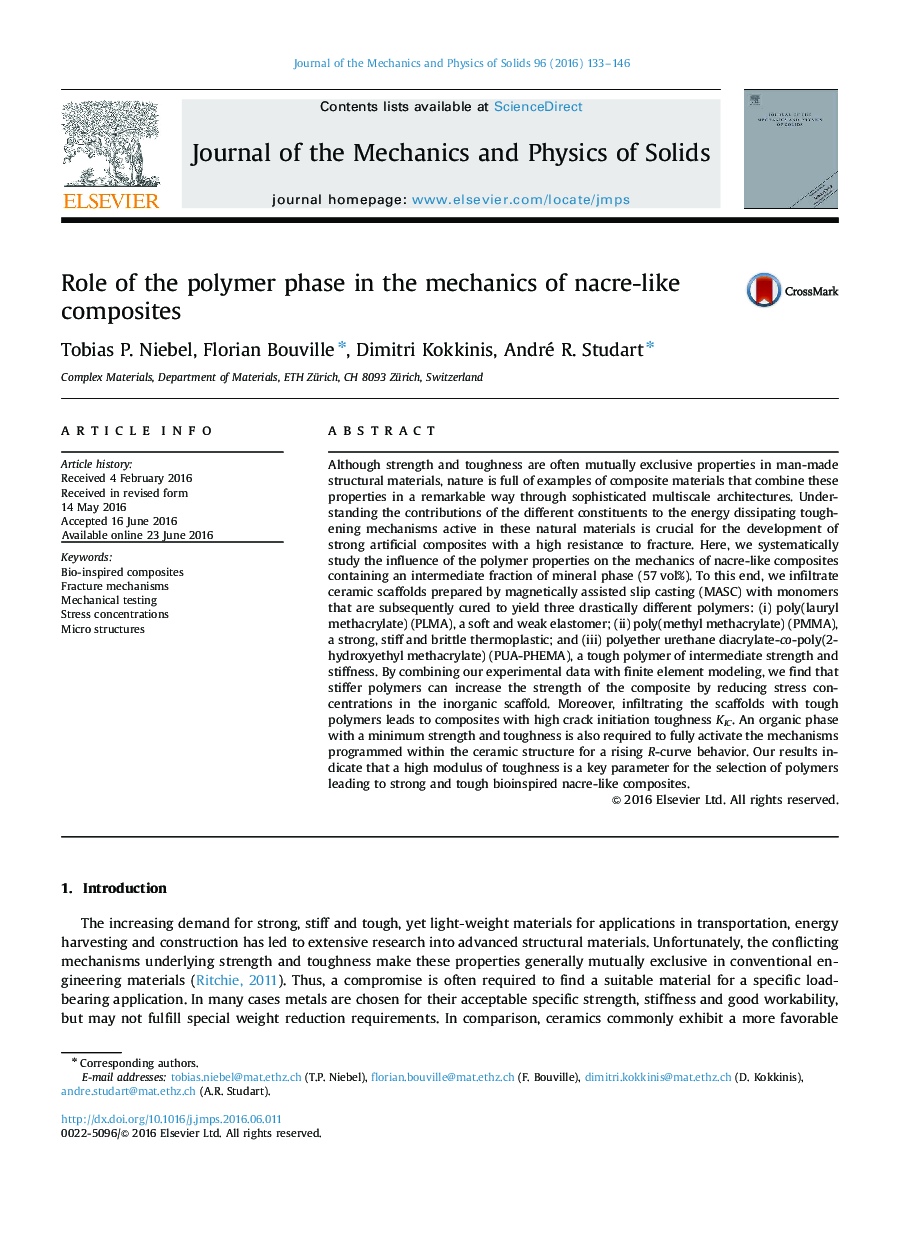| کد مقاله | کد نشریه | سال انتشار | مقاله انگلیسی | نسخه تمام متن |
|---|---|---|---|---|
| 797716 | 1467047 | 2016 | 14 صفحه PDF | دانلود رایگان |
• Nacre-like ceramic scaffolds are infiltrated with 3 drastically different polymers.
• Stiff polymers enhance composite strength by reducing stress concentrations.
• Fracture toughness of composites correlates with toughness of matrix polymer.
• Polymers activate fracture toughening mechanisms programmed in the scaffold.
• Strong, stiff and tough polymers are suitable matrices for nacre-like composites.
Although strength and toughness are often mutually exclusive properties in man-made structural materials, nature is full of examples of composite materials that combine these properties in a remarkable way through sophisticated multiscale architectures. Understanding the contributions of the different constituents to the energy dissipating toughening mechanisms active in these natural materials is crucial for the development of strong artificial composites with a high resistance to fracture. Here, we systematically study the influence of the polymer properties on the mechanics of nacre-like composites containing an intermediate fraction of mineral phase (57 vol%). To this end, we infiltrate ceramic scaffolds prepared by magnetically assisted slip casting (MASC) with monomers that are subsequently cured to yield three drastically different polymers: (i) poly(lauryl methacrylate) (PLMA), a soft and weak elastomer; (ii) poly(methyl methacrylate) (PMMA), a strong, stiff and brittle thermoplastic; and (iii) polyether urethane diacrylate-co-poly(2-hydroxyethyl methacrylate) (PUA-PHEMA), a tough polymer of intermediate strength and stiffness. By combining our experimental data with finite element modeling, we find that stiffer polymers can increase the strength of the composite by reducing stress concentrations in the inorganic scaffold. Moreover, infiltrating the scaffolds with tough polymers leads to composites with high crack initiation toughness KIC. An organic phase with a minimum strength and toughness is also required to fully activate the mechanisms programmed within the ceramic structure for a rising R-curve behavior. Our results indicate that a high modulus of toughness is a key parameter for the selection of polymers leading to strong and tough bioinspired nacre-like composites.
Figure optionsDownload as PowerPoint slide
Journal: Journal of the Mechanics and Physics of Solids - Volume 96, November 2016, Pages 133–146
